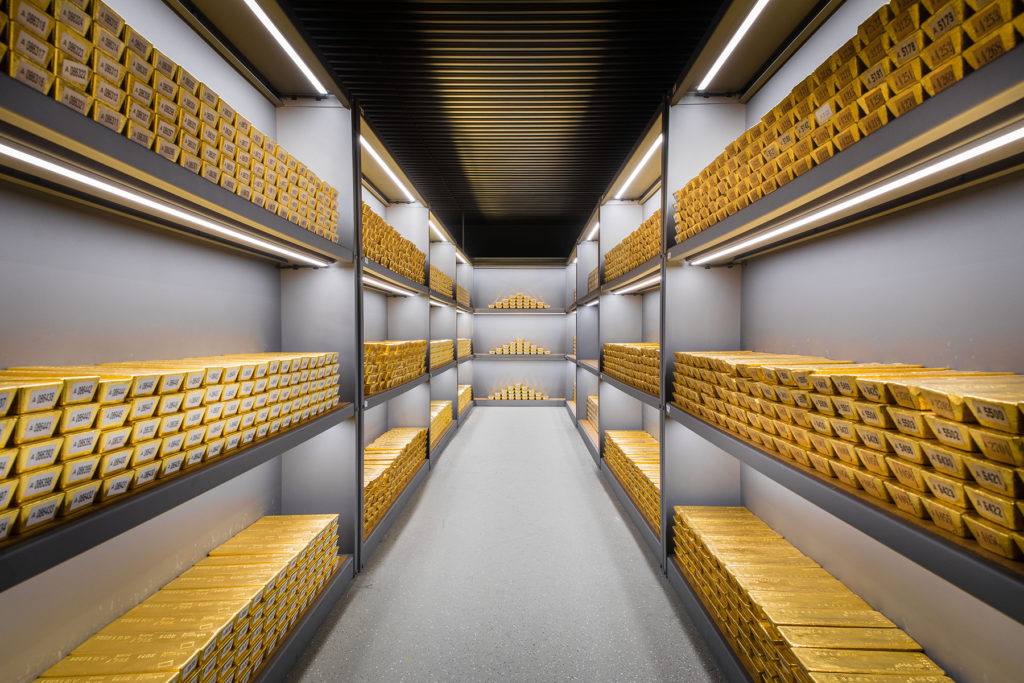13 Apr 2018
by Peter Schiff, Schiff Gold:

The Germans are showing off their gold.
The country ranks second in the world only to the US in official gold holdings. This week, the Bundesbank launched a six-month exhibition on gold showcasing its reserves along with the bank’s most interesting gold bars and coins. The official exhibit is part of a renewed emphasis on the yellow metal in Germany.
Ahead of the exhibition, Bundesbank executive board member Carl-Ludwig Thiele boasted that Germany holds 1.8% of the world’s gold. The yellow metal represents 70% of the country’s foreign exchange reserves. Compare that with Switzerland with only 6% of its reserves in gold.
Germany recently brought a lot of that gold home. Last summer, the country completed a gold repatriation project three years early. The Bundesbank said it made the decision to move the gold home “to build trust and confidence domestically.”
The gold exhibition, along with a recently released book titled “The Gold of the Germans,” seems designed to do the same thing. Thiele said for the first time, the book shows readers the gold bars in such a way as if they were held in their own hands.”
There has been some public skepticism about German gold. Some people have even suggested it doesn’t exist. Thiele wants to allay those fears.
I can assure you that the gold of the Germans is stored and administered under the highest standards. This will remain so in the future.”
The German public also has rekindled a love affair with gold. Over the last 10 years, gold investment has boomed in Deutschland. In 2016 alone, Germans poured €6.8 billion ($8 billion) into gold investment products, with 22% of German investors buying gold over the past 12 months. Over the last 10 years, Germany has established itself as a 100 ton-plus per year market for gold bars and coins. The WGC calls the growth in the German gold market a “radical transformation.”
The Germans have understandable skepticism about paper money. The country suffered through extreme hyperinflation during the years of the Weimar Republic. As a report published by Handelsblatt Global noted, gold offers stability. You can hold it in your hand.
Gold bullion seems much more tangible. Even more so if those gold bars are stacked in your own vaults. This was evidently the thinking at the Bundesbank in 2012, when the Federal Audit Office told bank officials that they needed to make spot checks that gold reserves held abroad actually existed. Germany’s central bank took the hint and began transporting tons of the reserves back to its vaults.”
There’s a practical reason behind Germany’s focus on gold. It recognizes the economic instability in the eurozone and wants to shield itself as much as possible. Handelsblatt noted that payment surpluses typically result in the accumulation of currency reserves. But in the eurozone, payments surpluses and deficits are measured in Target-2 balances. This refers to the gross settlement process within the Eurosystem of central banks.
These too are subject to considerable skepticism on Germany’s side. After all, what is the value of a Target-2 claim against liabilities in Greece if that country should exit the eurozone and declare bankruptcy?”
The Germans recognize that gold represents economic stability. They have plenty of it. And they want us to know about it.
Read more at original source:
